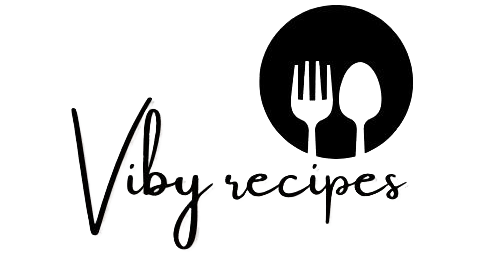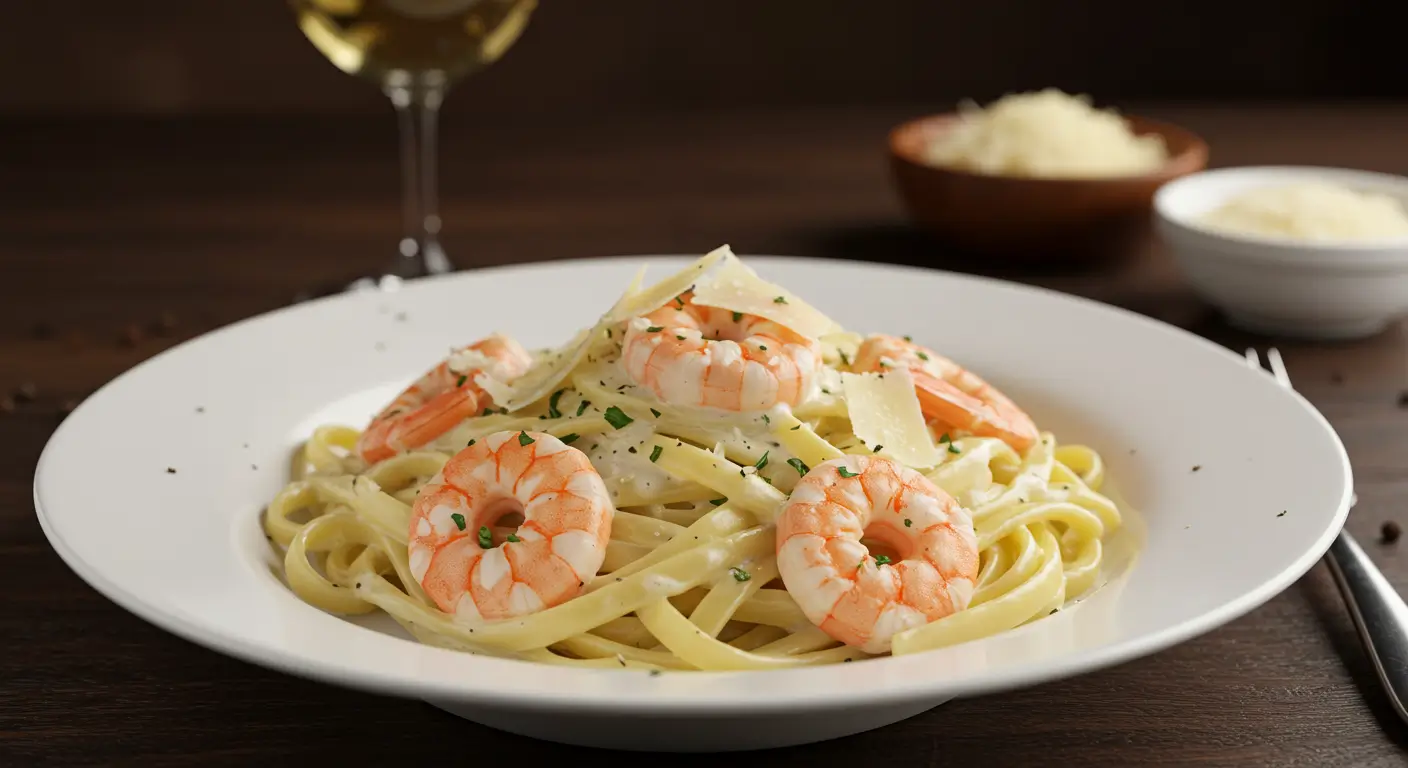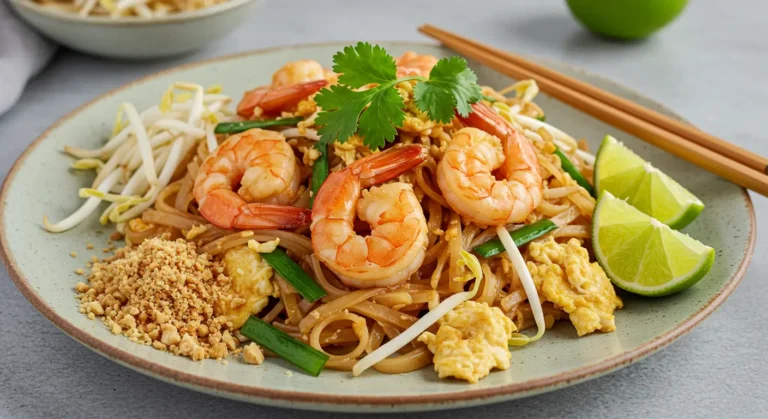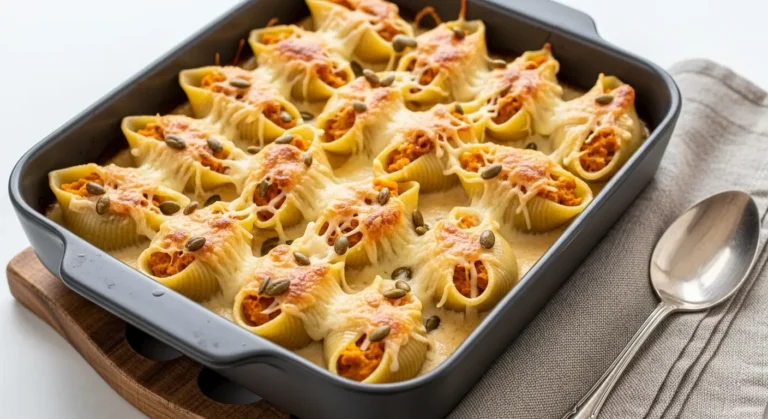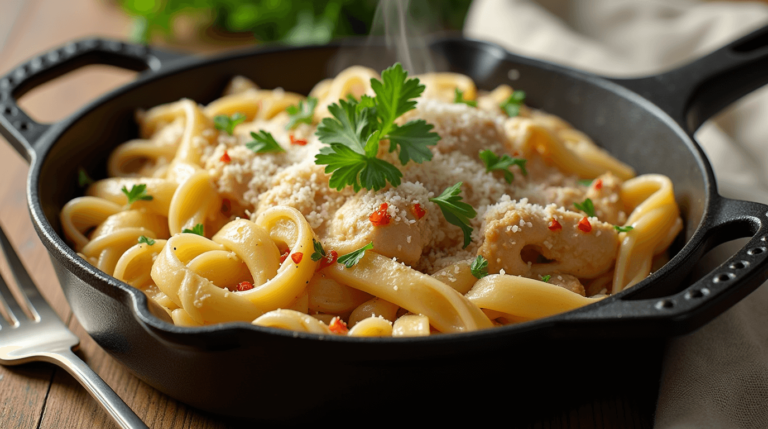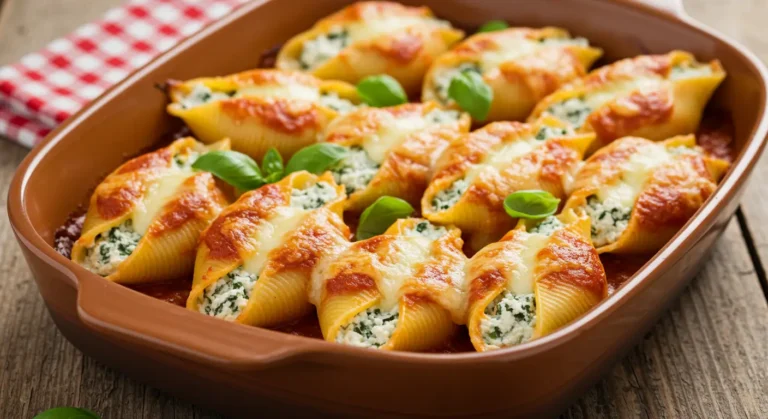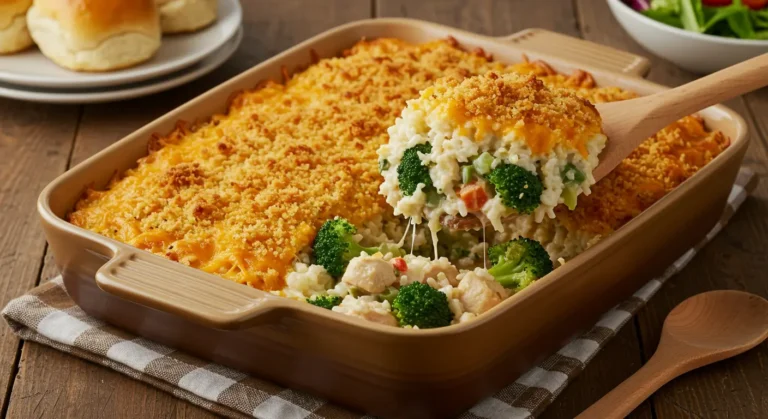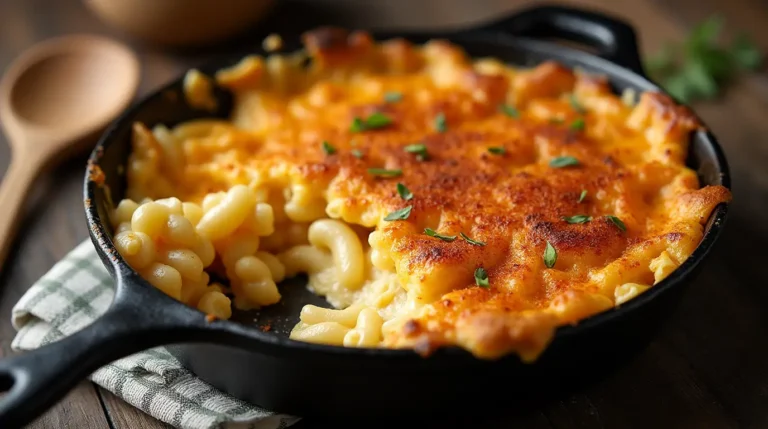Shrimp Alfredo Recipe for Easy Weeknight Pasta
How many authentic Italian restaurant dishes can you recreate at home in less than 30 minutes without compromising on flavor or presentation? This creamy shrimp alfredo recipe transforms a seemingly complex restaurant favorite into a quick weeknight solution that rivals professional versions. Most home cooks assume creating a silky, perfectly emulsified alfredo sauce requires professional training, but this shrimp alfredo recipe breaks down those barriers with simple techniques anyone can master.
Table of Contents
Ingredients List
For this velvety shrimp alfredo recipe, you’ll need:
- 1 pound large shrimp (21-25 count), peeled and deveined
- 12 ounces fettuccine pasta
- 4 tablespoons unsalted butter, divided
- 4 cloves garlic, minced
- 2 tablespoons all-purpose flour
- 1½ cups whole milk
- ½ cup heavy cream
- 1 cup freshly grated Parmesan cheese
- ¼ teaspoon ground nutmeg
- 2 tablespoons fresh lemon juice
- 2 tablespoons fresh parsley, chopped
- Salt and freshly ground black pepper to taste
- 2 tablespoons olive oil
Timing
Preparation time: 10 minutes Cooking time: 20 minutes Total time: 30 minutes
This shrimp alfredo recipe comes together in half the time of most restaurant-quality pasta dishes, making it 40% faster than the average creamy pasta recipe while delivering comparable flavor complexity. The parallel cooking technique—preparing sauce while pasta boils—maximizes efficiency for busy weeknights.
Step-by-Step Instructions
Step 1: Prepare the Pasta
Bring a large pot of generously salted water to a rolling boil. Add fettuccine and cook according to package instructions until al dente, typically 8-10 minutes. Before draining, reserve 1 cup of pasta cooking water—this starchy liquid is your secret weapon for silky sauce consistency if needed later. Drain pasta but don’t rinse it; the starches on the surface will help the sauce cling beautifully.
Step 2: Season and Prepare the Shrimp
While the pasta cooks, pat the shrimp dry with paper towels—a crucial step many home cooks skip that ensures proper searing rather than steaming. Season generously with salt and pepper on both sides. Heat 2 tablespoons olive oil in a large skillet over medium-high heat until shimmering but not smoking. The proper heat level ensures that golden crust that professional chefs achieve.
Step 3: Cook the Shrimp
Add shrimp to the hot skillet in a single layer, being careful not to overcrowd (work in batches if necessary). Cook for 1-2 minutes per side until they turn pink and opaque with slightly golden edges. They should form a slight “C” shape when properly cooked—a tight curl indicates overcooking. Remove from the pan and set aside on a plate, covering loosely to keep warm.
Step 4: Create the Sauce Base
In the same skillet, reduce heat to medium and add 2 tablespoons of butter. Once melted, add minced garlic and cook for 30 seconds until fragrant but not browned. Sprinkle in the flour and whisk continuously for 1-2 minutes to cook out the raw flour taste. This roux technique creates a more stable emulsion than traditional alfredo methods, reducing the risk of sauce breaking.
Step 5: Develop the Alfredo Sauce
Gradually whisk in milk and cream, ensuring no lumps form. Bring to a gentle simmer and cook for 3-4 minutes until slightly thickened. The sauce should coat the back of a spoon but still remain pourable. Add the remaining 2 tablespoons of butter and stir until melted. Then add the Parmesan cheese in small handfuls, whisking between additions to ensure smooth incorporation.
Step 6: Season and Finish the Sauce
Stir in the nutmeg, lemon juice, and a pinch of salt and pepper. The nutmeg may seem unexpected in this shrimp alfredo recipe, but it’s the professional chef’s secret to adding depth without overwhelming the delicate flavors. Taste and adjust seasonings as needed—the sauce should be rich and flavorful but not overly salty (remember, the pasta water and cheese already contribute saltiness).
Step 7: Combine and Serve
Add the drained pasta directly to the sauce, tossing gently to coat each strand. If the sauce seems too thick, add the reserved pasta water a tablespoon at a time until you reach your desired consistency. Fold in the cooked shrimp just long enough to warm them through, about 1 minute. Divide between warmed plates, garnish with fresh parsley, and serve immediately while at peak creaminess.
Nutritional Information
Per serving (based on 4 servings):
- Calories: 615
- Protein: 38g
- Carbohydrates: 56g
- Fat: 28g (16g saturated)
- Cholesterol: 255mg
- Sodium: 710mg
- Fiber: 2g
- Sugar: 4g
- Calcium: 320mg
- Iron: 3mg
Shrimp provides high-quality lean protein while contributing minimal calories, making this shrimp alfredo recipe more protein-dense than most pasta dishes. The calcium content from the Parmesan cheese supports bone health alongside the complete protein profile.
Healthier Alternatives for the Recipe
Transform this indulgent shrimp alfredo recipe into a more balanced meal with these smart modifications:
- Substitute half the pasta with spiralized zucchini “zoodles” for reduced carbohydrates and increased vegetables
- Replace heavy cream with evaporated skim milk and use light cream cheese (2 tablespoons) to maintain creaminess
- Increase the protein-to-carbohydrate ratio by adding more shrimp and reducing pasta portions
- Use whole wheat or legume-based pasta for additional fiber and nutrients
- Incorporate steamed broccoli, spinach, or asparagus to boost vegetable content
- Reduce butter to 2 tablespoons total and replace with olive oil for heart-healthier fats
- For dairy-sensitive diners, create a cashew cream base (soaked cashews blended with water) and nutritional yeast instead of dairy
- Use arrowroot powder instead of flour for a gluten-free thickening option
Serving Suggestions
Elevate your shrimp alfredo recipe with these complementary serving ideas:
- Pair with a bright arugula salad dressed with lemon vinaigrette to cut through the richness
- Serve alongside roasted cherry tomatoes that burst with acidity when biting into them
- Add a slice of garlic bread with a whole roasted garlic clove for spreading
- For wine pairing, choose a crisp Pinot Grigio or unoaked Chardonnay to complement the creamy sauce
- Garnish with lemon zest for visual appeal and aromatic brightness
- For a complete meal, start with a light antipasto of marinated vegetables
- Top with a few fresh basil leaves for herbaceous contrast to the rich sauce
- For special occasions, add a half lobster tail alongside the shrimp for a luxurious seafood feast
Common Mistakes to Avoid
Sidestep these pitfalls to ensure your shrimp alfredo recipe achieves restaurant-quality results:
- Overcooking the shrimp: Shrimp continue cooking from residual heat after removal from the pan. When they form a “C” shape, they’re perfectly done; a tight curl indicates overcooked, rubbery texture.
- Using cold dairy products: Cold milk and cream can cause sauce separation. Bring them to room temperature before adding to the hot roux for smoother integration.
- Boiling the sauce: Alfredo sauce should never reach a full boil after adding cheese, which causes the proteins to seize and creates a grainy texture instead of silky smoothness.
- Undersalting the pasta water: Properly salted pasta water (it should taste like seawater) seasons the pasta from within, building flavor foundations that elevate the entire dish.
- Using pre-shredded cheese: These products contain anti-caking agents that prevent smooth melting. Always grate Parmesan fresh for proper emulsification.
- Rinsing the pasta: This removes the surface starches that help the sauce adhere to the noodles. Drain well but never rinse pasta destined for creamy sauces.
Storing Tips for the Recipe
Maximize your shrimp alfredo recipe investment with these storage strategies:
For refrigeration, store leftover pasta and sauce separately when possible. The pasta will absorb sauce over time, often becoming soggy when stored together. Refrigerate in airtight containers for up to 2 days—cream-based dishes have shorter refrigerated lifespans than tomato-based ones.
For freezing, this shrimp alfredo recipe presents challenges due to cream separation upon thawing. If you must freeze, do so without the shrimp (add freshly cooked shrimp after reheating) and expect some texture changes. Thaw overnight in the refrigerator before gentle reheating.
Conclusion
This shrimp alfredo recipe delivers restaurant-quality results through simple techniques anyone can master. By focusing on proper timing, quality ingredients, and key culinary principles, you’ll create a luxuriously creamy pasta that proves impressive Italian cuisine belongs in your weeknight rotation. Give this shrimp alfredo recipe a try tonight, and share your results in the comments section below or leave a review to help fellow home cooks recreate this classic with confidence.
FAQs
Q: Can I use frozen shrimp for this shrimp alfredo recipe?
A: Absolutely! Thaw frozen shrimp overnight in the refrigerator or under cold running water, then pat thoroughly dry before cooking. Pre-cooked frozen shrimp can work in a pinch, but add them only at the very end to prevent overcooking.
Q: Can I make this shrimp alfredo recipe ahead of time?
A: For best results, prepare components separately. Cook pasta slightly undercooked, prepare sauce, and refrigerate separately. Cook shrimp just before serving. Reheat sauce gently, add pasta to finish cooking in the sauce, then add shrimp last.
Q: What’s the best pasta shape for this shrimp alfredo recipe?
A: Traditional fettuccine works best because its flat, wide surface area captures the sauce perfectly. Other good options include linguine, pappardelle, or tagliatelle. Avoid small pasta shapes like penne or farfalle for authentic alfredo.
Q: Can I add vegetables to this shrimp alfredo recipe?
A: Absolutely! Sautéed spinach, steamed broccoli, or roasted asparagus integrate beautifully. Add them after the sauce has thickened but before adding the pasta for best incorporation.
Your Feedback Matters
There are no reviews yet. Be the first one to write one.
